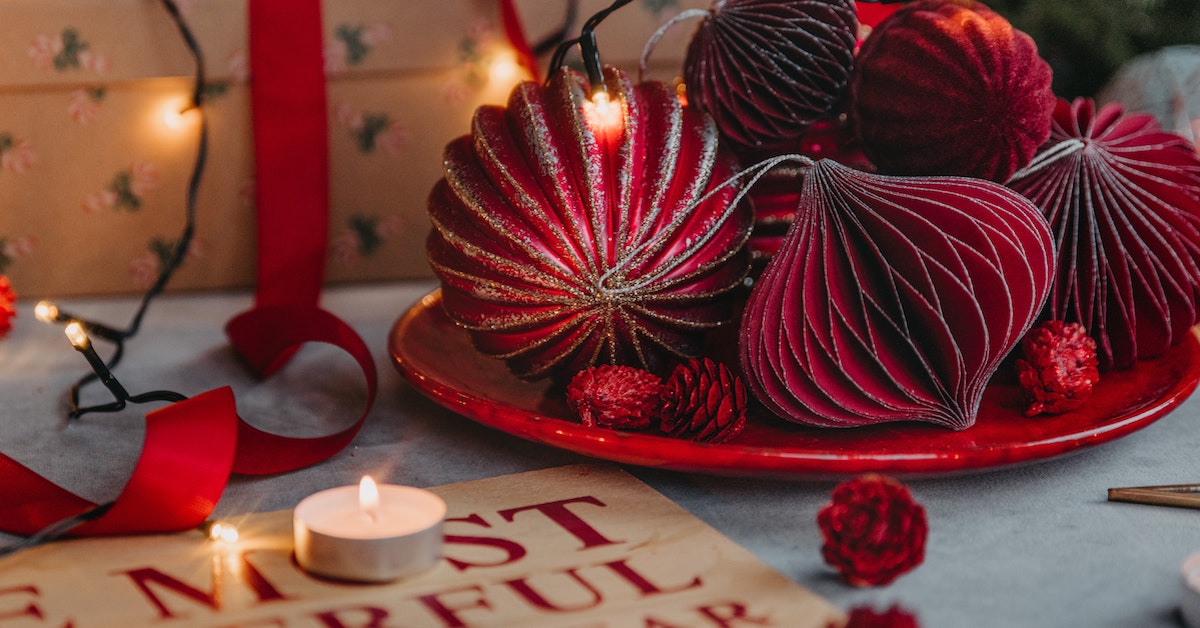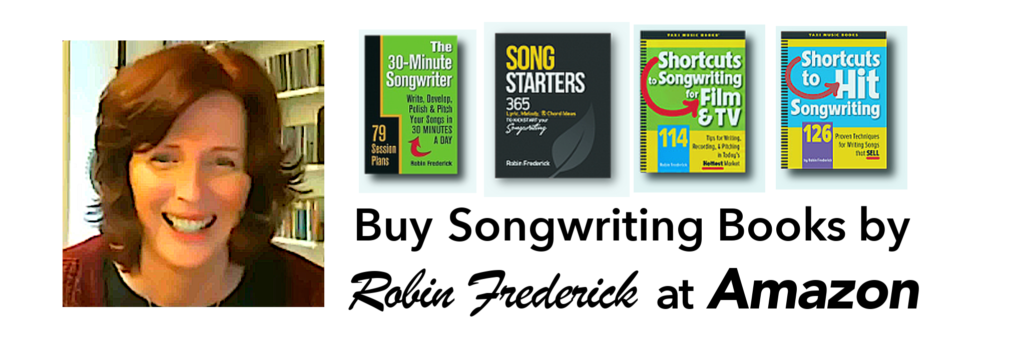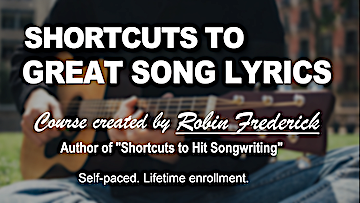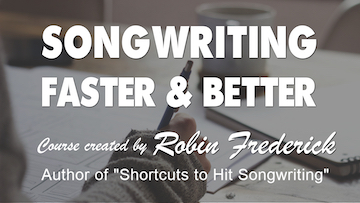Unlike radio hits that burst on the scene then fade away, holiday songs have a long, long lifespan. Every major artist records at least one album of holiday songs. Plus there’s an avalanche of holiday movies and TV shows that need these songs, too. Sure they include the classics that everyone knows and loves, but they need to sprinkle in a few potential new holiday hits, too.
The music industry will be looking for holiday songs starting in May and June for artist albums, and September to November for film and TV uses. But you don’t want to be writing songs about how fun it is to make snow angels and wear furry boots in July!
So, start your songs now. Then you can use the next few months to rewrite, polish, and record your shiny-bright seasonal hits. (For you folks Down Under… you can either write about surf and sand and Santa in December, or immerse yourself in classic holiday movies to get in the mood.)
So, while the sights, sounds, and excitement of the season are all around, take the time to look and listen like a songwriter. Make a note of images, grab snippets of conversation. Be aware of your own feelings, too. Remember the holidays of your childhood. You’ll use all these ideas to add a fresh feel to your new holiday classic..
THE ESSENTIAL TOOLS FOR CREATING YOUR PERFECT HOLIDAY HIT
Observe and immerse
“Get into the holiday spirit” may be a cliché but, like many cliches, it’s built on a truth. The holiday spirit requires a shift in thinking, a step out of your everyday world into a parallel universe in which ordinary people set up extravagant light shows on their front lawns, children pretend to behave, and there’s a Santa on every corner which somehow seems okay.
The holidays are also a time when relationships with friends and family move to center stage. Emotions are the driving force behind successful songs of all kinds, and this is a time when emotions run high—hope, love, nostalgia, anticipation, or longing.
Find your core idea or theme
Need a fresh idea to launch your holiday hit? Here are a few places to look for inspiration. Any one of these can start a song, or two or three.
▪ Visit the local mall and just watch people for an hour. Try to guess what they’re thinking and feeling. Imagine what each person is shopping for and why. Build a situation around one or two interesting looking people.
▪ Ask a child what the holiday means to him or her. Ask an adult the same question. Write a song about one answer or both.
▪ Remember your holidays growing up. How was the holiday celebrated in your family? In your town? What were your traditions? Remember one incident, gift, or story that stands out from the rest.
▪ Attend a religious service. What is the message of the service? Why have people come? What are they feeling?
▪ Watch your favorite holiday films and TV shows. What kinds of situations do you see? How do people feel? What are they saying and doing? Choose a situation or line of dialogue and write a song around it.
Stick to a genre you know well
Because so many holiday greats were written in the 1940s and 1950s—the heyday of the American Standard—there’s a tendency to think of that style as the only one that truly expresses the holiday spirit. But there are holiday greats in many styles, from Gwen Stefani’s Retro-Pop hit You Make It Feel Like Christmas to the sadder, singer-songwriter edge of Joni Mitchell’s “River.”
Watch “You Make It Feel Like Christmas” on YouTube…
Stick with a style you know. From Indie Folk to Rock to Electro Pop, they will all work just fine. Of course, if you want to write an Adult Contemporary song in the American Standard style, you certainly can do that, too!
My books make a great holiday gift!
Holiday Lyric Tools
Mistletoe, tinsel, and kids with shining eyes are familiar holiday images that have been used in a lot of successful songs. So, sure, you can use them in your songs, too. But how about trying something a little more original. Here are some ideas based on a Christmas classic.
“The Christmas Song,” written by Mel Tormé and Robert Wells, is undeniably one of the great holiday songs of all time. These songwriters could have retired on the royalties from this song alone.
Here’s a fun lyric video for The Christmas Song…
FIND A NEW WAY TO SAY IT: Vivid, fresh images are at the heart of a good holiday song. But what can you say about Christmas that’s new? Hasn’t it all been said before? Yes and no. It’s how you say it that counts. For example, “The Christmas Song” opens a verse with this string of images:
Chestnuts roasting on an open fire
Jack Frost nipping at your nose
Yuletide carols being sung by a choir
And folks dressed up like eskimos.
Each line describes something familiar in a way that’s both visual and physical. Action words like “roasting” and “nipping” keep the scene from becoming static. Visual images like “chestnuts,” “open fire,” and “dressed up like eskimos” add color and paint a picture in the listener’s mind.
USE ALL THE SENSES: “Chestnuts roasting on an open fire…” isn’t just an image; it involves all the senses: the warmth of a crackling fire, the smell of wood burning, the visual of people gathered around it, their faces lit by the glow. Even though I’ve never roasted a chestnut in my life, it still works on me.
Fill your lyrics with the sights and sounds, the taste and feel of the holidays. And don’t settle for the obvious. The season offers enough to fill hundreds of songs. You could easily start a list right now, so go ahead.
Try It Now!
Listen to a few of your favorite Christmas songs or read the lyrics to see how images and action words are woven into the lyric. Then pick a holiday scene and describe it to a stranger. Paint a picture and bring it to life. Make them laugh or feel a wave of nostalgia. Get them involved. That’s what you want your listener to do.
Watch this video to learn more about using images.
Holiday Melody Tools
Your song needs a melody that’s memorable, original, and catchy. Of course that’s the combination that all songs aim for, but it’s especially important in holiday songs. You have just one month every year to make an impression. Will they remember that song next year? Try these tips for writing an upbeat, memorable holiday hit melody.
USE PLENTY OF MELODIC MOTION: Holiday songs tend to have a lot of motion in the melody. Even Christmas carols have plenty of leaps and scales, from “Silent Night” to “Joy to the World.” You’ll hear a combination of smooth, flowing phrases mixed with a quick leap upward that cascades back down again. Holiday song melodies climb up and down through the notes of a chord or swoop right through it. Then there’s “Jingle Bells.” It gets stuck on a single note then grabs attention by jumping up and shouting “Hey!” These melodies just don’t sit still for very long.
ADD RHYTHMIC INTEREST: Rhythmic syncopation helps to put listeners into a holiday mood. Start a few phrases on unexpected beats or break up a long line into shorter, repeated phrases with lots of energy.
MAKE IT EASY TO REMEMBER: A melody with good structure will be easier for listeners to remember than one that wanders around. A pattern of phrase repetition and variation will make your melody catchy and keep it interesting.
Here’s a common melody pattern that listeners like.
- Sing a melody line then repeat that melody with a new lyric.
- Move to a different melody line and lyric and repeat that.
- Then do something new or return to your first melody line.
Check to see if you have a good mix of repetition and variation in your melody. A Christmas classic like Winter Wonderland is a great example of a melody that’s rhythmically interesting and has a solid pattern of repetition and variation, making it easy to remember.
Here are more ideas for adding strength to your melody.
Try It Now!
Check out some of your favorite holiday songs. Notice how much motion there is in the melody and how it’s created. Then look for patterns of repeated lines. Where do melody lines repeat and where do the change? (Remember, lyrics can change over repeated melody lines.) For current Christmas hits in this style, check out Kelly Clarkson’s “Underneath the Tree” or John Legend’s ‘Wrap Me Up In Your Love.” You’ll hear a catchy, upbeat melody style.
USING PUBLIC DOMAIN MELODIES
Listeners enjoy hearing familiar melodies at this time of year. Try covering a well-known favorite in an unfamiliar way. For example, a Jazz version of “We Three Kings” or a bluegrass interpretation of “Jingle Bells.” Just be sure the listener can recognize the original.
You can also write a new holiday lyric to a public domain melody, such as a traditional Christmas carol, a folk song, a hymn, or any song written prior to 1926. Or consider a classical melody in the public domain, such as a theme from Tchaikovsky’s “The Nutcracker.” Be sure to check the copyright date of any melody you’re thinking of using. You can find lists of Public Domain songs at pdinfo.com.
Try It Now!
You can find playlists of holiday hits on your favorite stream-on-demand site (Spotify, Apple Music, Amazon Music). And of course you’ll hear them in every mall, supermarket, and holiday party. Keep one ear on the melody and lyrics to hear how they get people into the holiday spirit. Then try writing a holiday hit of your own.
GETTING YOUR SONG OUT THERE
Independent Artists
If you’re an indie artist, a full-length holiday album can be expensive to make. Instead, think about recording an EP of five to six songs or try a holiday single. Make it available to buy, download, or stream. Better yet, give one of the tracks away as a special holiday gift to your fans.
Pitching to Publishers
Most established artist already have a holiday album or two, so music publishers will be pitching to current artists making their first holiday album. That means your song should have a current, fresh melody and lyric that will work for someone like Dua Lipa, Luke Bryan, or Justin Beiber. Your demo should sound current for the genre the song is in. Music publishers look for these songs in May or June because they’ll be pitching to artists in July and August when holiday albums go into production.
Pitching to Videographers
You can make some holiday cash by submitting your songs to a site like Triple Scoop Music which licenses songs to professional videographers and pays you a portion of the license fee. These songs are used in videos of Christmas weddings, holiday stage performances, and other special events.
Film & TV holiday songs
Holiday TV shows and films need plenty of songs. There are new offerings each year and new opportunities to pitch your songs to them. Music libraries will be looking for them in June and July; music supervisors will be looking for them in September and October, sometimes even later in the year depending on when the project is in production.
You can use a pitch service like TAXI.com or the “In Production” listings at the Hollywood Reporter or Variety online to find out about Christmas projects.
Don’t limit yourself to Christmas…
There are holidays all year round and different holidays all over the world. Not all of them have been celebrated with as many classic songs as Christmas. For instance, I’ve noticed there’s a limited number of New Years songs; you might find less competition and more opportunities there. I mean, how many times can you listen to What Are You Doing New Years Eve?
Most holidays share similar underlying emotions—happiness, love, hope, longing, or togetherness. These emotions are often idealized (“White Christmas”), longed for (“I’ll Be Home for Christmas”), or expressed in melodies and lyrics that make the listener experience them in the present. Think of loved ones, family, friends, and communities while you’re writing. Let the emotions lead you into and through your song.
Recording Holiday Songs
You have a couple of choices when recording a holiday song: go the traditional route or try something completely new and unexpected. Arrangements can be as simple as guitar and vocal or push a home studio to the limit with authentic-sounding orchestral emulation.
The vocal will be the most important element. The key to a strong vocal is phrasing and emotion. One of my favorite tricks for creating an authentic, unique performance is to speak the lines with emotion immediately before you record. Say the lines out loud, with plenty of feeling. Then preserve the pauses and emphasis points when you sing.
Seven tips for creating a great vocal performance.
Your instrumental track should be as authentic as your vocal. Thin synthesizer pads and fake choirs just won’t work. You’d be much better off recording a simple acoustic guitar track. Just keep the feelings real and your song will shine!



